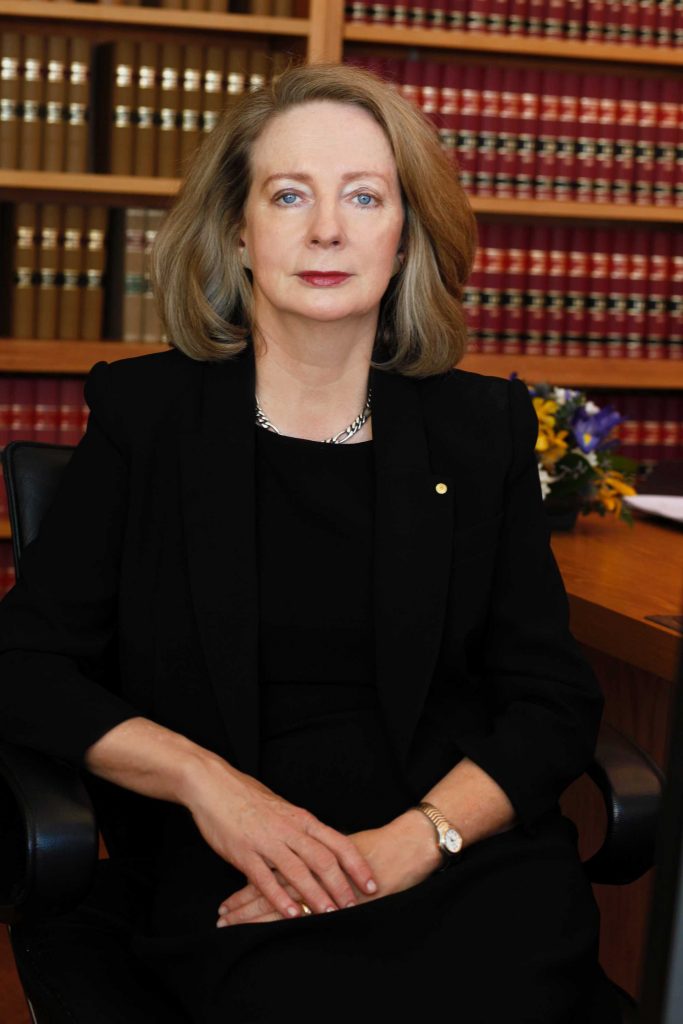Recently, I took time out from my law studies to reflect on what the old legal profession looked like compared to the new face of this 21st century.
This reflection transported me back to the 1990s, when I was growing up in Victoria, with an appreciation of being exposed to a harmonious and culturally diverse Australian society.
As a young girl, I observed that the legal profession at that time did not reflect the diversity of my urban city of Melbourne. However, as the decades passed by, I’ve noticed a variance in the legal profession, which was once bombarded by men.

The Honourable Chief Justice of the High Court of Australia, Susan Kiefel
For instance, the Honourable Susan Kiefel AC, Australia’s first female High Court Chief Justice was appointed on 30 January 2017 – ending 113 years of men leading the nation’s highest court.
Her Honour’s appointment urged me to compare the old against the new face of legal professionalism, which is supported by data provided at a Bond University seminar.
Old Legal Professionalism
The old legal professionalism consisted of feeling lesser empathy for a client whilst focusing more on the legal obligations at hand.
It embodied the following characteristics:
- A legalistic mindset – lawyers were primarily only concerned about the law, not emotion;
- Orthodoxy orientation – gravitation towards being conservative as to maintain stability and structure, an inclination towards status quo, which can be a setback to being open-minded;
- Emotional distance – reason without emotion and to leave feelings at the door;
- Moral neutrality – morality and ethics of client’s actions are put aside as the focus is on the legal option at hand; and
- Demographic bias – mostly lawyers are Caucasian male.

Lawyer
New Legal Professionalism:
Our modern way of thinking has brought about new methods of interacting with clients.
One that is more about working together and less about being rigorous, which entails the following traits:
- Commercial realism – lawyers willing to partner commercially with their client;
- Digital literacy – embracing new technology, staying modern and remaining up to date with latest disruptions in addition to learning how to code and use social media;
- Skill – adopting the skill of separating relevant to irrelevant;
- Emotional intelligence – possesses self-awareness, self-management, social awareness;
- Cultural competency – open-mindedness and cultural knowledge;
- Moral leadership – lawyers to advice on the right thing to do – a good lawyer becomes a trusted adviser to their client; and
- Demographic diversity – growing number of lawyers are female from diverse ethnic backgrounds.

Lawyer
Changing Face
From further research, I discovered that the combination of lawyers at senior levels in large Australian law firms, did not reflect the various ethnic backgrounds of clients, law schools or the community at large.
Athough there exists racial diversity at university level, the senior roles in Australia are more likely than not, occupied by Caucasian males.
However, it is to be celebrated that in March 2017, a number of leading law firms have signed a commitment to boost cultural diversity in the senior ranks of partnerships.
This is an exciting development, for women like myself and many of my peers, who are of assorted cultural backgrounds.

Pic credit to AFR
Modern Face
The new face of Australia’s legal professionalism in the 21st century represents ideals that reflect a modern global society. A society that is demographically diverse, culturally competent and emotionally intelligent.
This modern face replaces the one that I witnessed growing up as a young girl when dreaming of becoming a lawyer, with no-one like me to look up to. The face of legal professionalism back then was one-dimensional, emotionally distant and legalistically minded.
Many years from now, I believe that this new direction will most definently provide a diverse range of role models for future generations to be inspired by. A wonderful example of this emergence is a group of practising lawyers who are driving the cultural diversity in the legal profession.
These lawyers, pictured below, have signed a pledge to open up the opportunity for gender and race diversity for the most senior roles in legal professionalism. To read more about the cultural diversity pledge, click here.

Lawyers driving cultural and gender diversity
SUMMARY
Although we are seeing a new face of diversity in the legal world, Australia still has a long way to go before it can say that there is a balanced view at the top of the law food chain.
Diversity would be beneficial for our society as a whole if we are to be competitive in the global market. This means being demographically diverse, culturally competent and emotionally intelligent.
For me personally, it is wonderful to see replaced the ‘cold’ distant nature of lawyers of old to make way for modern professionals who are both self aware and socially conscious.
Now, what a wonderful accomplishment to have a woman at the very head of our legal system, breaking 113 years of this position being filled by men.
“You can usually do whatever you determine to do. The constraints or limits placed upon a person’s life and career usually come from themselves,” The Honourable Susan Kiefel AC’s advice to a group of students.
Disclaimer: The content within is general or publicly available information only. Seek advice on your specific circumstance to find out more about the legal profession.





Ashly
Very interesting read.
Beyond the Pacific
Thanks for the feedback. Cheers, Miriam.
Angela Bloch
Brilliant blog! Thanks for the info Miriam 🙂